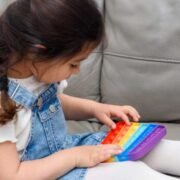Mensuration is a branch of mathematics that deals with measurements. The topic was introduced first in Egypt for land surveying after there was civil work.
Archimedes, the father of mensuration, introduced this branch of maths that measures the Mensuration Formula of geometrical figures like their area, volume, perimeter, etc.
Why do we need to know mensuration?
Mensuration is the act of measuring. It is used to measure quantities of objects across standard and non-standard measurements. We stay in a three-dimensional world, which is why measurement has a key role in our day-to-day lives.
Here are a few real-life applications of mensuration:
- In measuring the agricultural field and the floor area to calculate the land sale and purchase transactions.
- To measure the volume of a container to store packaged milk or edible solid food items.
- To measure the surface area when you need to paint the building or the house.
- Volume and height are used to understand the water level in lakes.
- Mensuration is used to calculate the packaging cost of sachets, like in the case of tetra packing.
Types of mensuration
Mensuration applies to two and three-dimensional shapes.
- The one-dimensional figures include line, line segment, and ray.
- The two-dimensional figures include square, triangle, rectangle, trapezium, parallelogram, and circle.
- The three-dimensional figures include cube, sphere, cuboid, cylinder, hemisphere, and cone.
Mensuration of Different Dimensional Figures
Since the way of measuring objects of different dimensions can be different, here is how to measure objects of different dimensions:
- One-Dimensional or 1D Figures:
The shapes and figures that have just a single measurement is one-dimensional figure.
- Two-Dimensional or 2D Figures:
The shapes and figures that have two measurements are two-dimensional figures. These have two dimensions, namely length and breadth. These do not have height or depth.
- Three-Dimensional or 3D Figures
The shapes and figures that have three dimensions are 3d figures. These are length, breadth, and height.
Important mensuration terminologies
Here are some of the terms that are used in mensuration calculations.
- Perimeter measures the boundary of the figure, and it is measured in meter, kilometre, etc.
- The area measures the amount of space in any region that is covered by the geometrical figure. It is measured in meter square, kilometre square, etc.
- Lateral surface area is the region’s area that is covered by the line segments or the laterals of any geometrical figure.
- Curved surface area is the area of any region covered by any geometrical figure’s curved face.
- Total Surface area is the area that is covered by the entire figure.
- Volume is the space in the three-dimensional figure, and it is measured in meter cube, kilometre cube, etc.
Mensuration Formulas for Different Shapes
Let us start with the mensuration formulas of the 2D figures first:
- Square
A square is a quadrilateral that has all its four sides and angles the same.
Perimeter = 4 * the length of the side
Area = side * side
- Rectangle
A rectangle is a quadrilateral with two opposite sides of the same length. The longer side is the length, and the shorter side is the breadth.
Perimeter = 2(length+breadth)
Area = length * breadth
- Parallelogram
The parallelogram has a base and height.
Perimeter = sum of the length of all sides
Area = Base * height
- Rhombus
A rhombus has diagonal lengths say d1 and d2.
Perimeter = Sum of all four sides
Area = (d1*d2)/2
- Trapezium
Imagine a trapezium that has the length of its parallel sides as a and b.
Perimeter = sum of all four sides
Area = (a b)/2*h
- Equilateral Triangle
Consider the equilateral triangle has sides a.
Perimeter =3a
Area =3√4a2
- Circle
Imagine that the circle has a radius of r.
Circumference or the perimeter =2πr
Area =πr2
- Semi-Circle
If the radius of a semi-circle is r, then:
Circumference or the perimeter =πr+2r
Area =πr2 /2
Here are the mensuration formulas for some 3D figures
- Cube
The side of a cube is a, then:
Lateral surface area =4a2
Total surface area (TSA) =6a2
Volume =a3
- Cuboid
Consider that the length of the cuboid is l, the breadth is b, and height is h.
Lateral surface area (LSA) =2h(l+b)
Total surface area (TSA) =2(lb+bh+hl)
Volume =l×b×h
- Right Circular Cylinder
Imagine a right circular cylinder with radius r and height h.
Curved surface area (CSA) =2πrh
Total surface area (TSA) =2πr(r+h)
Volume =πr2h
- Hollow Cylinder
If there is a hollow cylinder of inner radius r, outer radius R and height h.
Curved surface area (C.S.A) =2π(r+R)h
Total surface area (T.S.A) =2π(r+R)(R+h−r)
Volume =πh(R2−r2)
- Right Circular Cone
If there is a cone with radius r, height h, and slant height l, then:
Curved surface area (CSA) =πrl
Total surface area (TSA) =πr(r+l)
Volume =13×πr2h
- Sphere
If there is a sphere with radius r, then:
Surface area =4πr2
Volume =4/3πr3
- Hemi Sphere
If there is a hemisphere of radius r, then
Curved surface area (CSA) =(πr2)/2=2πr2
Total surface area (TSA) =3πr2
Volume =23πr3
Mensuration solutions
- What is the area and perimeter of a square whose sides measure 5 cm.?
The side of the square is 5 cm.
The perimeter of the square is 4*5 = 20cm.
The area of the square is = 5*5 = 25 cm. square
- When will you use the perimeter formula, and when will you use the formula of the area in the below scenarios?
- You need to fence the garden so that no animals enter it – when you need to fence the garden to prevent animals from coming in. You will have to calculate the garden’s perimeter.
- You need to lay grass in the garden – you will have to find out the area when you need to lay grass.
Conclusion
The study of mensuration has a lot of application in our day-to-day lives. Even without knowing the exact formula, we are still using the principles of mensuration almost daily.
Mensuration calculates various parameters of a shape, namely volume, perimeter, and area. It is different from geometry that studies the relationships and properties of points and lines of different shapes.
Mensuration was introduced by Archimedes, who is one of the greatest mathematicians in history. His contribution today helps to calculate the area of plane figures and figure out the volume of any curved surface.












